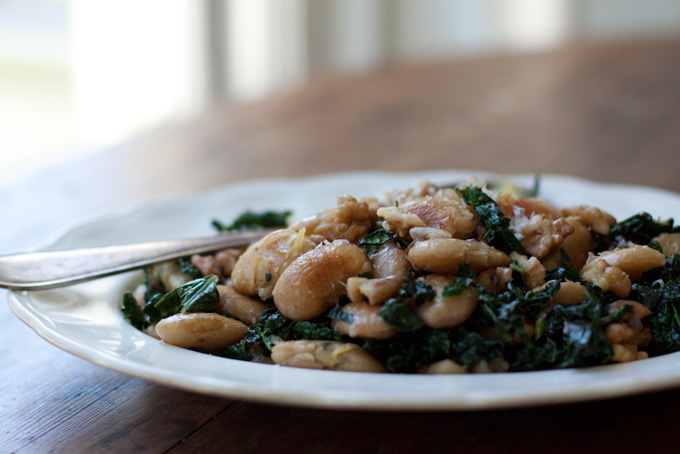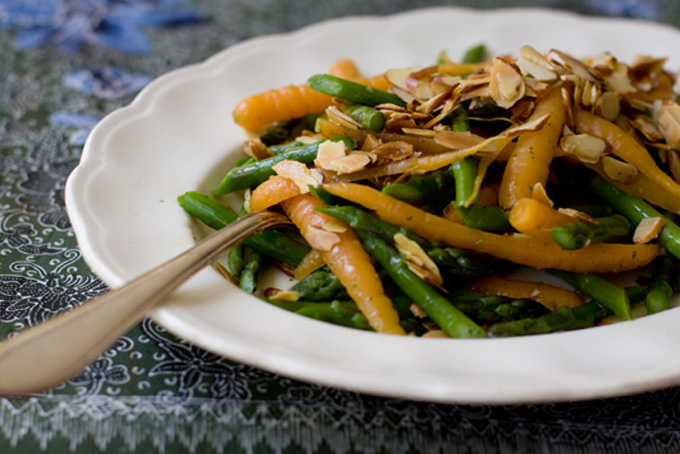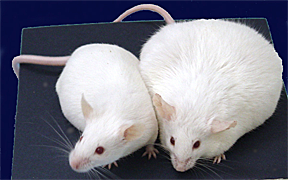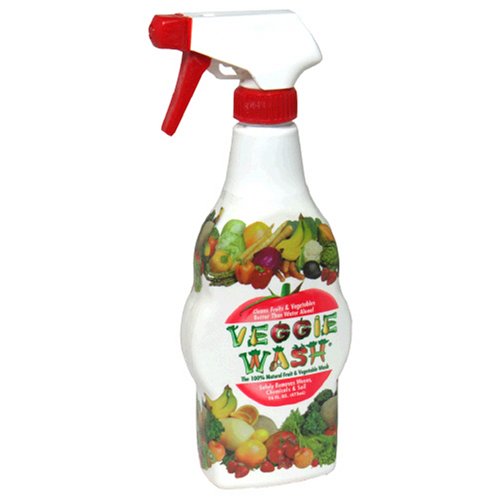Filed under: Nutrition, Recipes
Last week I talked about an easy way to eat more fish, because of all of the wonderful health benefits associated with adding fish to your diet, especially wild-caught fish. I hope some of you gave that salmon recipe a shot, as it is absolutely delicious.

That same product also has a wild-caught cod that my wife and I both tried recently as well, and it was also excellent. Though cod is a much leaner white fish, you can add your own healthy fats to it and that way you completely determine the fatty acid content of the meal.
Cod is a mild-flavored fish and it is available throughout the year, which is nice. Cod is in the same fish family as haddock and pollock. Cod is also a natural source of vitamin D (hence cod-liver oil), it is also high in selenium, vitamin B6, phosphorus, vitamin B12, potassium, niacin, magnesium and some omega-3 fatty acids to boot (~500mg in 8oz).
More often than not the vitamin content of food gets overlooked today. Overshadowed by nutrients like omega-3′s and calcium. But vitamins like B6 and B12 are needed to lower homocysteine levels, which is important because homocysteine damages the blood vessel walls and elevated levels greatly increase your risk of heart attack and stroke. Cod is also high in niacin (also a B vitamin), which is often used therapeutically to lower cholesterol levels, and is one of the few things that may lower lipoprotein(a).
Anna came up with an awesome recipe to spice up the mild-flavored cod, and add even more nutrition to its already stellar profile.

Kickass Cod
- 1lb cod
- 4 tbsp pasture butter
- 2 pieces of sesame Ezekiel bread
- lots of garlic powder (to taste)
Directions: Toast the two pieces of Ezekiel bread. Place in a food processor with 1/2 tbsp melted pasture butter and some garlic powder and make bread crumbs out of it. Place the fish in a large pyrex dish. Melt the rest of the butter and drizzle half over the fish, then sprinkle the bread crumbs onto the fish and drizzle the rest of the butter over the bread crumbs. To top it off, sprinkle garlic powder over it all to taste.
Bake at 350 degrees for 25-30 minutes, or until done. Enjoy!
Filed under: General Health, Nutrition
I just wanted to remind everyone that the sale on Mike Robertson’s Single Leg Solution ends tonight. This is one hell of a product, so if you want to learn how to properly execute and integrate single-leg work into your training, don’t miss out, and pick up a copy of Single Leg Solution today.
Most people know that they should eat more fish, especially cold-water fatty fish like salmon. However it is definitely something that is easier said than done.
Cold-water fatty fish are a great protein source, and are a very rich source of heart-healthy omega-3 fats. Not only that, but wild-caught salmon has its pink color from an antioxidant called astaxanthin, which is 100 times more powerful than vitamin C, and another reason why you should always purchase the much darker and richer-looking wild-caught salmon over farmed salmon, as it is much higher in astaxanthin.
Wild-caught salmon also has lower PCB and dioxin levels, has a better fatty acid profile, eats its natural diet of krill (which is how it gets the astaxanthin) rather than corn, and in my opinion tastes better to boot.
The problem is, you generally have to buy fish fresh and cook it that night, or at the latest the following day. You can also chop and freeze fish yourself, but it tends to make you and your kitchen have that cat-food smell. Not good.
Fortunately I came across a pretty sweet product at Stop N’ Shop recently that really helps to solve this problem. Unfortunately it is a Stop N’ Shop brand product, so while other chains might carry their own version, they may not.

It is frozen wild-caught Alaskan sockeye salmon. It is also sold at the same price as the fresh wild-caught salmon, but it is already pre-portioned and you can eat it whenever you damn well please.
Just toss in the fridge the morning before you plan on eating it, let it defrost for the day and then cook however you want! We usually only cook our salmon one way, because my wife has a pretty damn good salmon topping:
For 1lb of salmon
- 1 tbsp honey
- 1 tbsp brown sugar
- 1 tbsp dijon mustard
Stir all of them together and slather over your salmon. It is absolutely fantastic. They also have other wild-caught fish like haddock (which is a very lean white fish), so now you don’t have any more excuses not to get more fish into your diet!
Filed under: General Health, Nutrition, Recipes
Most people looking to eat healthy often have a hard time coming up with good recipes. The reality is, there are websites everywhere (including mine) that provide you with all the tools you need to become a healthy cooking whiz, as well as providing you with tons of kick-ass recipes.
Recently a CP client told me about a new site called 101cookbooks.com (thank you Natalie). It took me a while, but I finally checked it out this morning, and it rocks!

Now these recipes are all vegetarian, but adding some meat to them is as easy as 123. There are tons of categorized recipes to help you make anything you can dream of. They are all beautifully photographed and are written about in great detail to lay out exactly how they are made.
The most recent recipe, Carrot Almond Salad, looks absolutely delish, just toss a little chicken in there, and we are really talking! Check it out.

Filed under: Nutrition, Recipes
It has been a while since I posted a smoothie recipe, so I thought with the heat wave that we are experiencing up here in New England, this is as good a time as ever to post a delicious spring/summer style smoothie.
I know for myself I am a huge fan of peaches (and all stone fruit really – plums, nectarines, apricots, etc). They are one of my favorite parts of summer, as they are incredibly sweet and juicy.

I highly recommend that you purchase organic peaches, or at the very least wash them thoroughly with a veggie wash, as they top the list of the most contaminated produce, with over 92% of peaches containing pesticide residues.
Peaches are a rich source of vitamin A (carotenes), potassium, flavonoids and other phytochemicals, such as lutein and lycopene. Plus they are just freakin’ delicious.

Peaches & Cream
- 8oz unsweetened vanilla almond milk
- 1 scoop vanilla protein
- 1 cup fresh or frozen peach slices
- 1 tbsp chia seeds
- 2 tbsp walnuts
- ice cubes if desired
Nutrition Information: 350 calories, 26.5 g protein, 15 g fat, 29.5 g carbs, 8 g fiber
If you want to make it a bigger smoothie, and maybe even more of a treat, adding a 6oz peach Greek yogurt would be a nice touch. You could also add some actual organic cream or replace the walnuts with some coconut oil if you are in the mood for a more tropical feel. Really you are only limited by your imagination!
Filed under: General Health, Nutrition
For you long-time readers you have heard me mention how foods high in omega-6 fats (like industrial vegetable oils – corn, cotton, safflower, soybean, and sunflower) can be problematic and lead to health issues. I am a believer that excess consumption of these oils has contributed, along with high fructose corn syrup, overall excess calories, and a sedentary lifestyle to our obesity epidemic. Recently Stephan Guyenet wrote a great piece on the contributions of industrial vegetable oils to our obesity epidemic, read it here.
In that article he talks about two studies that look at mice that consume excessive omega-6 fats (meaning their omega-6 to omega-3 ratio was above the recommended 4:1) and how it lead to not only their obesity, but it even lead to obesity in their offspring, even if they did not consume excess omega-6 fats.

This leads me into my main focus for today. As important as weight regulation is and clearly excess omega-6 consumption alters that, at least in rats and mice, it also can increase risk of cancer, again at least in rats and mice.
A new study conducted by Sonia de Assis of Georgetown University showed that when pregnant rats were fed a diet high in omega-6 fats, it increased risk of cancer for the children and grandchildren of those rats, even if they themselves at normal diets. Granddaughters of the rats had a 30% greater chance of developing breast cancer than the granddaughters of rats who did not eat excess omega-6 during their pregnancy.
In many ways this also piggy backs on the thought that consuming the pesticides, herbicides and fungicides thought to be obesogens during pregnancy can alter the bodyweight and bodyfat of those children. I wrote an entire blog on that topic.
Now to be clear this does not mean that fat causes cancer. What it means is eating shitty food that is made up of man-made industrial oils is a bad idea. If you focus on eating real food, and take your fish oil, as well as eating fish 2x/week and getting in your share of flax and chia seeds, this is not an issue. However, if you rely a lot on fast-food or pre-packaged meals, they are usually made with these dangerous low-quality oils because they are cheap, so buyer beware.
It should also be noted that omega-6 fats are an essential part of your diet, you need them to function properly and for the inflammatory and healing process. The ideal ration of omega-6 to omega-3 fats is anywhere from 4:1 to 1:1. Unfortunately the typical American diet is between 16:1 to 20:1, which can lead to heart issues, depression, infertility and cancer.

A healthy omega-6 fat
The thought is that these powerful omega-6 fats can alter how our genes function or are expressed, without actually altering the genes themselves. There is mounting evidence that so much of what we do, as well as what our ancestors do, has a huge influence in how our genes are expressed and our disease risk.
Your lifestyle, environment and those of your immediate ancestors can all affect your disease risk tremendously, as our genes themselves only account for a small fraction of our risk, we determine the rest, so choose wisely.
Filed under: General Health, Nutrition
Lately my wife and I have been loving one of the world’s most portable snacks: dried fruit!
I know it may sound boring or to dry, but if you make good choices you can enjoy some delicious and healthy fruit that still retain just a touch of moisture.

My favorites have been apricots, dried plums, and figs. They are fruits that I rarely eat, contain tons of fiber, potassium and antioxidants and have no added sugar. That is a combination that is hard to pass up. Plus they last a long time if needed, are incredibly portable and satisfy that sweet-tooth.
You can get into trouble with them if you go overboard, but each serving is about 25 grams of carbs, which is very reasonable. There are other dried fruits out there (raisins anyone?), but most have tons of added sugar, or are dried to the point of being hard and crispy. I steer clear of these and recommend you do the same.

Simple, nutritious, and delicious these dried fruits can be a great addition to your diet and add some much needed variety to your fruit intake. Enjoy!
Filed under: General Health, Nutrition
Most people know that they should drink more green tea for better body composition, energy and health. Green tea can decrease the likelihood of cancer and cardiovascular disease, along with lowering LDL, blood pressure and blood glucose levels.

In fact Jonny Bowden just wrote a great 2 part blog series titled the 14 Keys to Longevity. His Number One tip? Drink green tea every day. It is that good for you.
Unfortunately many people feel like they have to drink straight green tea, which can be a little grassy. If you are one of these people, you are missing a whole world of awesome teas!
While green tea has the most research backing its health benefits, other teas are also of equally tremendous value. White, green, oolong and black tea are all from the same plant (camellia sinensis), they are just picked at different times and subjected to different fermentation methods. It is essentially just a giant spectrum of kick-assery!

So as you can see, white tea has the highest catechin content and is especially effective at helping to prevent colon cancer. On the other end of the spectrum black tea has the greatest amount of theaflavins and thearubigins (the catechins get converted to these in the fermentation process) and is the best at preventing stroke.
Don’t just fixate on green tea, you should enjoy all types of the camellia sinensis plant. I recommend people find high quality teas with great natural flavors (nothing artificially sweetened or with sugar). A great website to check out reviews and ratings of teas you might consider buying is steepster.com
Below are some of my favorites:
There are obviously a ton of teas to choose from, and those are just a few of my current favorites, though it is changing all the time! The point is that drinking tea does not have to be spartan and plain, it is to be enjoyed. So find a few flavors that you like, and drink a few cups a day, your body will thank you.
Filed under: General Health, Nutrition
Many people are self-professed chocoholics. They just can’t get enough. Fortunately for them there is a lot of emerging evidence about the health benefits of dark chocolate (though not milk or white unfortunately). These benefits include: decreased blood pressure, decreased LDL, stimulates endorphin production, is high in fiber, tons of antioxidants, high in magnesium, high in iron and tastes awesome. I wrote an entire blog on the benefits of dark chocolate, so that is not really where I am headed with this today.
Another great food that I have always loved are plums. They are small and delicious and there is nothing like biting into a perfectly sweet plum. Recent research has also shown that one plum has equal or higher antioxidant capacity and phytonutrient content as a handful of blueberries! This is no small feat. It has also been shown that the phytonutrients in plums can disrupt the growth of breast cancer cells without affecting the healthy cells. I wrote an entire blog about the benefits of plums as well, and that is also not where I am headed with this today.
I am actually going to blog about a nice little product that my wife and I found which is a delightful dessert or a perfect addition to home-made trail mix: Plum Sweets. These tasty little treats are made up of dried plums coated in dark (sorta dark, probably like 65%, so not as dark as I would like, but still) chocolate. They are absolutely delicious and provide a ton of antioxidants, with some vitamins, minerals and a little bit of fiber to boot.

While these may not be the healthiest snack on earth, when consumed in moderation or used in a home-made trail mix where they double as the dried fruit and the chocolate, they are great. 1 serving provides about 130 calories, 6 grams of fat, 19 gram of carbs, 2 grams of fiber, and 1 gram of protein.
They market it as the ultimate antioxidant snack. They base this on the tremendous ORAC score of both dried plums and dark chocolate. ORAC is a measure of antioxidant capacity of a given food. Dried plums (more commonly known as prunes, but dried plums don’t sound like they are only eaten to keep elderly folk regular) score incredibly high on this scale, as does dark chocolate. So a food combining the two is a food to be enjoyed!
Check them out, they might just become your new favorite dessert!
Filed under: General Health, Nutrition
Q. Brian,
Due to things like “bioaccumulation” and “biomagnification” in the food chain, would you say that if having to prioritize, it is far more critical to worry about the source of animal products than whether or not produce is organic or conventional? Ideally we’d have the best on all fronts, but if I understand things correctly, even conventional produce wouldn’t yield nearly the potential toxic loads on the body that “poorly” sourced animal products can.
On a side note, is there any particular method for washing fruits and veggies that you do recommend and use yourself?
A. Yes if you have to prioritize, like even I do, I would most definitely say it is more critical to obtain grass-fed or pasture-raised animal products than organic produce. You can’t change the fatty acid composition of meat, nor can you remove residual amounts of antibiotics and growth hormones from it either. You can however wash fruit and vegetables to remove most if not all pesticide residues. So again, if you have to choose between pasture-raised animal products or organic produce, I go pasture-raised animal products every time, and maybe try to squeeze in organic produce on only the biggest offenders like peaches and apples.
I just recommend a simple fruit and vegetable wash, and follow the directions. I just use Citrus Magic Veggie Wash. I spray on a good amount, rub it in for 20 seconds, and thoroughly rinse off. It removes pesticide residues, fungicides, waxes, soil, etc.

Q. Brian,
Do you know of any study that directly links the accumulation of pesticides and herbicides in produce and the antibiotics in meat, dairy, with infant obesity? Possibly something we need more research on?
I do not know of any study that directly links it. It would most likely be deemed unethical to attempt to induce obesity in infants with chemical exposure. There is certainly growing evidence as I noted here, that these chemicals can contribute to obesity in infants. In mice and rats they most certainly contribute to obesity. This is definitely an area we need more research on, because if many of these “safe” pesticides/herbicides/fungicides/plastics/etc contain chemicals that actually disrupt the ability for the human body to regulate bodyweight, they could certainly be disrupting many other sensitive systems in the body as well.
We do not know nearly enough about many of our current food production practices, and in reality about food in general. More research is needed in nearly all aspects of food and nutrition, and hopefully it will keep coming.
Filed under: General Health, Nutrition
Quick reminder before we get to the meat and potatoes that the introductory price of $97 on Optimal Shoulder Performance: From Rehabilitation to High Performance ends tonight at midnight – when the price goes up by $30. This DVD set has been getting some awesome feedback, so don’t miss out on this last chance to get it at an awesome value.
Many people who are health conscious will increase their vegetable intake tremendous, but will turn their nose up at fruit because vegetables are “better”. The thought is that vegetables provide all of the same benefits as fruit: vitamins, minerals, antioxidants, phytonutrients, water, fiber, etc without as much sugar. This is pretty much all true, but there are many things about foods that are yet to be discovered, and fruit may just have some benefits of its own, that surpasses that of even the great vegetables.

Enter Age-Related Macular Degeneration. In a 2004 study from the Archives of Ophthalmology (abstract of paper), it was found that fruit out-performed vegetables, antioxidant vitamins and carotenoids in preventing age-related macular degeneration.
The goal of the study was to examine the intake of antioxidant vitamins A, C and E, carotenoids, fruits and vegetables in relation to the development of age-related macular degeneration (ARMD), the primary cause of vision loss in older adults. It also looked at the development of neovascular ARMD, which is a more severe form of the illness.
The study followed over 110,000 men and women at least 50 years old who had no previous diagnosis of ARMD or cancer, for 12 to 18 years.

A total of 464 cases of early ARMD and 316 cases of neovascular ARMD were developed over that 12 to 18 year period (12 years for men, 18 for women). Fruit consumption was found to be inversely correlated with neovascular ARMD. It was found that participants who consumed 3 or more servings of fruit per day were 36% less likely to develop neovascular ARMD than those who consumed less than 1.5 servings per day. Surprisingly intakes of vegetables, carotenoids and vitamins A, C and E were not strongly related to either form of ARMD.
The take home point is not to start just slamming down fruit in place of vegetables, since vegetable are still tremendous foods with tons of other benefits, but to not be afraid to add a few servings of fruit per day into your diet. A few ounces of POM juice at breakfast with a banana, maybe a smoothie recipe later in the day, and a yogurt with some strawberries and blackberries as a nice snack would be a fine example. Three servings per day is definitely not hard and won’t contribute a large amount of sugar to your diet, so go ahead and enjoy Nature’s candy.





















Posted on May 11th, 2010 by Brian St. Pierre
5 Comments »